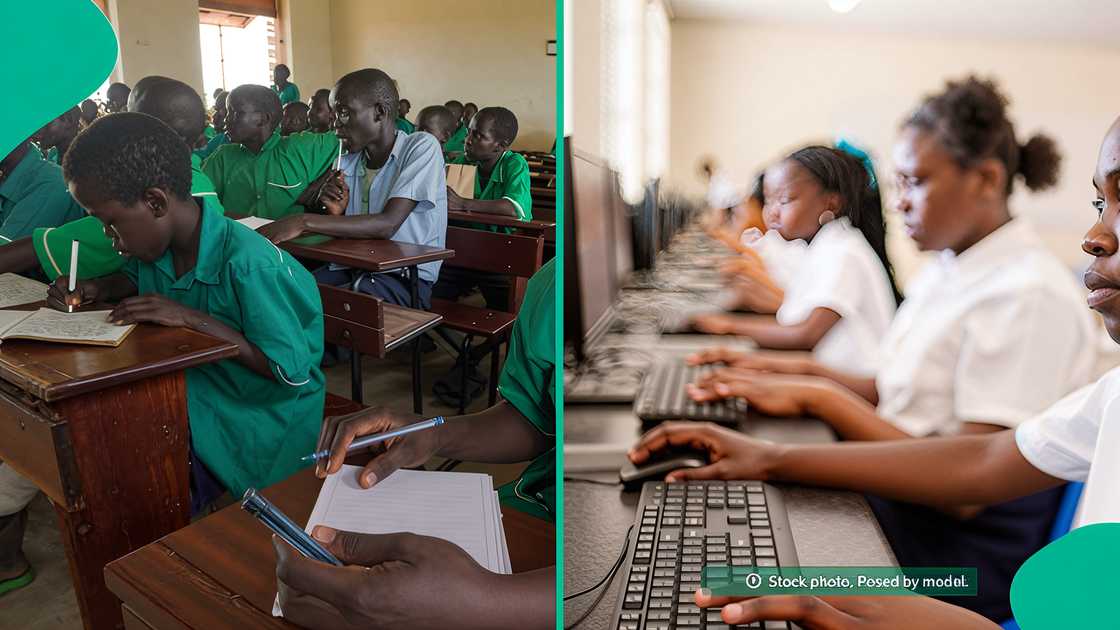CBT for WAEC and NECO: A Bold Leap or a Risky Gamble? by Folaranmi Ajayi
Editor's note: In this piece, Folaranmi Ajayi, an educator and policy writer, critiques the federal government’s plan to introduce Computer-Based Testing for WAEC and NECO, urging a cautious and inclusive rollout to prevent widening the digital and educational divide.
A few days ago, the Honourable Minister of Education, Dr Tunji Alausa, made an important announcement. By November 2025, the West African Examinations Council (WAEC) and the National Examinations Council (NECO) will begin using Computer-Based Testing (CBT) for their objective exams. By the May or June 2026 exam period, both the objective and written parts of the exams are expected to be done fully on computers.

Source: Twitter
This plan is bold and shows that the government wants to modernise how exams are conducted. It also shows an effort to reduce exam cheating, speed up the marking process, and make things more efficient. It is a step in the right direction, especially as the world continues to go digital. But as a teacher who works with students from different backgrounds, I believe we need to slow down and think carefully.
Many people often refer to the Joint Admissions and Matriculation Board (JAMB) as a good example of CBT success. JAMB has indeed made progress. Its exams are now faster to mark, and there is less room for cheating. However, it is important to understand that JAMB is quite different from WAEC and NECO. JAMB exams usually take place in one sitting and focus mainly on multiple-choice questions. WAEC and NECO, on the other hand, cover many subjects and include both essay and practical questions. This makes the exams more complex to manage on computers.
From my experience, many students are still struggling with digital skills, and there are many unresolved challenges with JAMB CBT, especially this year’s exam, such as system failure, incomplete questions, questions without diagrams, and incomplete options. Some students are nervous when taking JAMB CBT exams because they are not used to using a computer. Others face problems like poor electricity, broken computer systems, and a lack of internet, especially in rural areas. If WAEC and NECO are going to move to CBT, we must ask: are the students really ready? Many students across the country do not have the opportunity to practice with computers regularly, and this will likely affect their performance in the exams.
Also, are the exam bodies ready? Switching to CBT is not just about providing computers. It will require proper training for exam officials, updates to systems, and strong planning to prevent cheating and system errors. The exam process must be fully secure to ensure that the integrity of the results is not compromised. This will need investment in technology, infrastructure, and manpower, all of which are currently lacking.
It is also important to think about fairness. What about students with disabilities or those who do not have access to computers? How will the new system support them? These are real questions that must be answered before moving forward. Ensuring equal access and fairness is essential, especially when considering that some students in rural areas may have limited or no access to computers at all.
To get this right, the Ministry of Education, state governments, school owners, and private organisations must work together. They need to:
- Build and improve computer labs in schools, especially in rural areas.
- Train both students and teachers on how to use computers confidently.
- Try CBT for a few subjects in selected schools before going nationwide.
- Ensure examiners and invigilators know how to handle CBT.
- Plan for students with special needs so that no one is left out.

Source: Getty Images
We should not rush into full CBT. Technology can be good for education, but it must be introduced in a way that helps all learners, not just the lucky few. The goal is good. Making our exams more modern is something we should all support. But we must ask the right questions: Are the students confident with computers? Are teachers involved in the plan? Will it be fair for all children, no matter where they live or what challenges they face?
If we take our time, plan well, and include everyone, this idea can work. But if we rush, we may cause more problems than we solve. Let us modernise, yes, but let us do it in a way that is fair, thoughtful, and helpful to every child in the country.
Globally, several countries have adopted Computer-Based Testing (CBT) for both objective and essay components, though most have done so gradually. In the United States, exams like the GRE and TOEFL are fully computer-based and include essays, supported by robust digital infrastructure and years of preparation. The United Kingdom uses CBT for specific tests, such as the driving theory exam and language proficiency tests like IELTS, but national school exams like GCSEs remain largely paper-based. In countries like Estonia and Finland, digital assessments have been introduced at the school level, including open-ended responses, but they still provide paper options to ensure inclusion. India has embraced CBT for high-stakes university entrance exams such as JEE and NEET, though essay sections remain mostly traditional, and digital expansion is limited to urban areas.
Compared to these countries, the plan to adopt CBT for WAEC and NECO by 2026 is both bold and ambitious. While other nations have taken a phased and infrastructure-led approach, Nigeria faces challenges such as inconsistent electricity, limited access to devices, and digital literacy gaps, especially in rural areas. Unlike JAMB, which only tests objective questions in one sitting, WAEC and NECO are multi-subject, multi-format exams requiring more complex systems to manage theory and practical components. To match global best practices, Nigeria must prioritise inclusive training, infrastructure investment, and phased implementation to ensure that no student is left behind in the digital transition.

Read also
JAMB breaks silence on rumours of posting candidates outside chosen exam towns, offers cash reward for proof
The experiences of countries like the United States, the United Kingdom, and India offer important lessons. These countries have invested in robust infrastructure, teacher training, and phased implementation before rolling out CBT at scale. Their careful, measured approaches allowed for time to address technical challenges, fairness, and access issues. If Nigeria hopes to succeed with CBT for WAEC and NECO, it must take a similar approach: ensuring all students have access to the necessary tools, training, and resources before making such a significant change. The government must also ensure that the transition is inclusive, with special provisions for students with disabilities and those in rural areas who may not have regular access to computers.
In conclusion, while the decision to modernise the examination system using CBT is a commendable step, it is crucial that the government moves forward with caution. The plan must be executed with care to ensure that all students, regardless of their location or socio-economic background, are fully equipped for this transition. With careful planning, investment in infrastructure, and inclusive training, the shift to CBT could be a positive change for the country’s educational system. However, if rushed, it could create more problems than it solves, leaving many students behind. Let us modernise, but let us do so thoughtfully and inclusively.
Disclaimer: The views and opinions expressed here are those of the author and do not necessarily reflect the official policy or position of Legit.ng.
Folaranmi Ajayi is an educator, journalist, and education policy writer passionate about transforming Nigeria’s education sector.
Proofreading by James Ojo, copy editor at Legit.ng.
Source: Legit.ng





